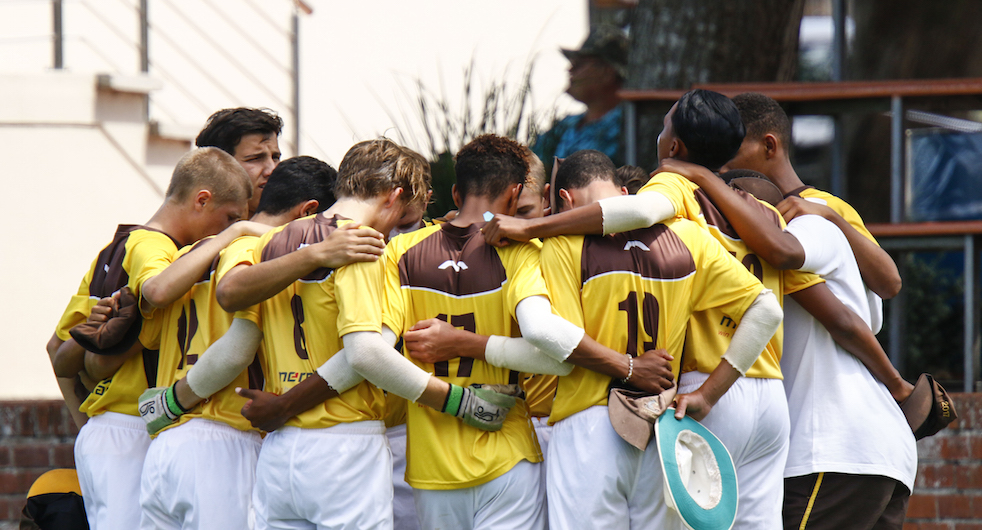The subject of transformation in South African sport continues to cause controversy.
Cricket South Africa (CSA) implemented its new quota system at the start of the 2015-16 domestic cricket season where all teams had to field six players of colour in their starting XI. Three of those had to be African black.
Finding top-quality black players, especially batsmen, has been difficult for the Proteas. We have seen the likes of Temba Bavuma and Mangaliso Mosehle come through the system, but they have been in the minority at the highest level.
And it starts at grassroots level. Despite CSA taking action to enforce the transformation policy at a school level, breaches have still occurred. As recently as the Coca-Cola T20 schools competition, some teams failed to meet transformation targets.
In February 2018, four Afrikaans schools in Pretoria were disqualified from the T20 tournament for failing to meet the quota requirement of two players of colour. The schools were Afrikaanse Hoër Seunskool (Affies), Centurion High School, Menlopark and Waterkloof, who have all produced national cricket alumni.
Despite their success at producing talent and their success rate in national competitions, all four teams were unable to progress to the knockout stages of the T20 Schools competition.
Head of sport at Centurion High School and former international umpire Johan Cloete chatted to SA Cricket magazine.
‘Originally when CSA sent out the criteria for the competition, they mentioned that we had to have two players of colour in the team. We had a meeting in May 2017 with CSA youth cricket manager Niels Momberg and all the top schools in Pretoria. We stated why it would be difficult to comply with that ruling.
‘Momberg said that if we write a letter explaining what we can do and stating what we will do in the future to try to meet the criteria, we will be able to participate. We all wrote letters, only Affies did not.
‘Out of the 24 teams in Pretoria that entered, only eight of them could comply with that ruling and 16 couldn’t from the start. We proceeded, played our pool matches and reached the quarter-finals. We were meant to play at the end of January 2018 and we got a letter via Northerns cricket union from CSA saying we could not play because we don’t have the required two players of colour.’
Being an Afrikaans school, Centurion High School receives applications from mostly Afrikaans-speaking pupils and according to them, this has been the major hindrance to them fulfilling the quota.
‘We don’t have a hostel and all our pupils who enrol are from around the area,’ added Cloete. ‘Last year when players from Centurion, representing Northerns, won the competition, all our players from our 1st XI lived 6km from the school. We play our own people, we don’t import players from other parts of South Africa.
‘I did state in my letter to CSA that we have only 900 pupils at our school – 458 of those are boys, 14 of them are boys of colour, three of them are playing rugby and only two are playing cricket.
‘One boy is our second-team captain and the other is only U14 and I’m not prepared to play him in the 1st XI, so we could not meet that criteria.’
Arno van Wyk, in charge at Menlopark, offered a similar reason.
‘It was highly disappointing for us and for the boys to be restricted from playing in the T20 competition. Winning the competition in 2010 and 2015 changed our lives.
‘Coco-Cola weren’t happy with the number of representatives of colour in the competition in the finals. It’s your top six schools partaking there and it is highly competitive. The schools that ended up there were perhaps not in a cricket cultural environment where they had players of colour. Two days before our the quarter-finals, Cricket South Africa pulled the plug. So that was disappointing. The players were already emotionally involved.’
Van Wyk continued by saying that Afrikaans-speaking players of colour do not exist.
‘We knew it was coming and we knew our backs were against the wall. There aren’t any black players who speak Afrikaans coming to our school. They don’t exist, where are they? Pupils coming from places like Mamelodi are all English-speaking.
‘It will be difficult for kids like that to enrol in a school like ours, being Afrikaans. Also to find students like that who are also quality cricketers makes it even tougher.’
CSA warned schools a year in advance that a ruling like this would occur, yet they still failed to meet the targets.
‘Mr Momberg stated the obvious that we were informed a year ago that something like this will happen, but we can’t do anything about it,’ Van Wyk continues. ‘Those players don’t exist. If they do exist give them to us, I will develop them.
‘I have developed numerous players. We have coached so many provincial players and put them through the ranks. It was disappointing that a two-time winner had to be thrown out of the tournament for the lack of players of colour.’
CSA scout and Western Province academy manager, Graham October, slammed both schools.
‘Transformation starts with the individual. You cannot embrace transformation if you don’t want to change. Transformation is a way of life,’ October told SA Cricket magazine.
‘Schools need to go back to their policies and see how they can change it. What do these schools do to keep the black man out? They have a language barrier. That’s what they need to change. Language. What these schools say is “We don’t attract blacks”. But why?
‘One, because of the language barrier. Two, because these players’ academics is not good enough. If they do take on a black boy, they say he’s not academically good. That’s another hurdle put in place to debar [sic] a black boy from ever going to those schools. Then they say: “No we can’t find them”, “We can’t attract them”.
‘Why don’t they attract black kids to their schools? Do you think the black boy from the township does not want to play on the lushness of their outfield or use their state-of-the-art facilities to get themselves up to speed?
‘If you take that model and put it into the township, our black boys will excel. White schools have re-fenced [sic] themselves in their enclave. There’s a lot they can do, but they need to first change themselves and embrace transformation. The school has a moral obligation to society to change.’
Read SA Cricket magazine
Photo: Michael Sheehan/Gallo Images







